Hello.
My name is Robin, and this is my website about computer games. Here you can find essays about old games, industry commentary, free games I've made for fun, and funny songs.
Yesterday EA and Playfish (makers of popular Facebook timesinks such as Restaurant City) put an end to weeks of rumour and gossip and formally announced they were “combining forces”, with EA paying $300m for the fast-growing social games company. Shortly after, EA announced plans to axe 1,500 staff and cancel twelve games in production. Nine hundred development jobs are expected to go in the next two years, with Black Box (NFS, Skate), Redwood Shores (Dead Space, Godfather), Tiburon (sports games, patches for sports games) and Mythic (Warhammer Online) rumoured to be among the studios hardest hit.
The timing of these announcements has widely been interpreted as EA hoping to show that they’re moving their focus away from cranking out lots of boxed product for consoles and chasing growth in other areas.
Lots of journalists, analysts and armchair pundits have weighed in to give their opinion on the wisdom of EA’s apparent strategic direction. One that caught my attention was on the blog of Greg Costikyan (formerly of Manifesto Games, and author of the ‘Scratchware Manifesto’). ‘Costik’ is known for his very hardline views on whether creativity can exist in a corporate environment (views which seem to me to be shown up as absurd hyperbolic ravings every time a great game comes out of one of the major publishers who he characterises as irredeemably stagnant).
Here’s what Costikyan had to say about EA/Playfish.
I don’t profess to know the full financial details of all of the deals that Costikyan cites, but I can’t help but think that his conclusions are not entirely soberly objective.
(more…)
Tags: commentary

When computer games first took off in the 1980s, there were only two input devices in common use: joysticks and keyboards. It wasn’t until late in the decade that mice joined the party, having had to first achieve market penetration (as late as 1990, many entry-level home computers didn’t ship with mice as standard) and then wait for developers to figure out how to use them effectively (instead of just crudely emulating a joystick).
The mouse and keyboard hybrid control scheme (“WASD”), having undergone many gradual refinements, is now the standard for most contemporary PC game genres. In Consoleland, joysticks were usurped by (digital and later analogue) joypads, at first for reasons of cost, but with later iterations outstripping joysticks in terms of the functionality and comfort they could offer.
Today, the advantages of keyboard & mouse and dual analogue stick joypad controls over their predecessors seem obvious. If there was any outcry in defence of old-fashioned keyboard and joystick controls at the time, it has been lost to history.
Now we’re undergoing the next paradigm shift in controller technology, from analogue thumbsticks to motion tracking pointing devices. A shift that in my opinion is long overdue.
(more…)
Tags: commentary, controllers, joypad, keyboard, motion control, mouse, progress, rant
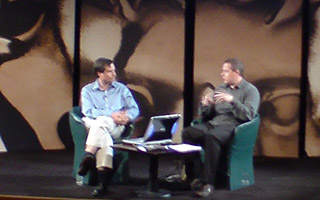
The British Academy of Film and Television Arts have been running occasional events aimed at the games industry for most of the last year. The latest of these was particularly notable – an hour-long chat with David Braben, head of Frontier Developments and one half of the creative team behind the classic computer game Elite, timed to coincide with its 25th anniversary.
Braben’s career was discussed in roughly chronological order, starting with the circumstances which led him (and fellow Cambridge student Ian Bell) to develop one of the first (if not the first) 3D home computer games. The details of this (astonishing) tale may have been familiar to most of the audience (having been chronicled by Francis Spufford in his book Backroom Boys: The Secret Return of the British Boffin, which was later televised as part of Brits Who Made The Modern World).
Braben noted that he’d originally been drawn to 3D graphics rather than games specifically, with a desire to render them at an acceptable speed being the reason for his early move to low-level assembly programming, and (if I understood correctly) that he’d only been programming for two years by the time Elite was released. It was also revealed that the colour status display (a neat trick on the BBC Micro which Acorn themselves didn’t know was possible) was a feature they had coded for a sequel to Elite, but which was folded back into the original shortly before release.
(more…)
Tags: archimedes, bafta, bbc micro, david braben, elite, frontier developments, lander, lostwinds, v2000, virus, zarch
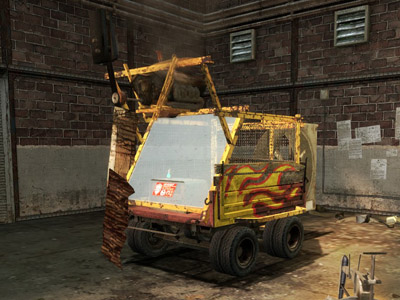
Research and Development is a puzzle-oriented single-player mod for Half-Life 2: Episode 2 developed by Matt Bortolino. It was released in July and is slowly starting to generate a well-deserved buzz in the wider gaming community. In single-player gameplay terms it’s perhaps the best thing that anyone has ever done with the Source engine, and by that I don’t mean “…by a mod developer”, I’m including the Half Life 2 episodes and Portal in that comparison.
The game is set in the Half Life 2 universe and for the most part uses existing Half Life 2 assets. The player character has no hazard suit and no weapons (although they do obtain the Gravity Gun and Antlion Pheromones during the course of the game), and must progress through a series of puzzle rooms, using their wits and the environment to deal with hazards, obstacles and enemies.
Many rooms introduce new game mechanics to the Half Life 2 toolbox such as portable ladders, breakable pipes, sheets of bulletproof glass and electrical traps that repulse the player instead of killing them. Some areas involve building or setting in motion physics-based Heath Robinson contraptions, others involve the kind of detective work usually found in point-and-click adventures. There are also some sequences (particularly a lengthy on-rails journey) that test the player’s ability to spot threats and counter them under time pressure. Successfully completing an area often triggers a gloriously over-the-top ‘payoff’, with the player’s actions wiping out all the nearby enemies in some amusing fashion or literally launching them into the next area.
(more…)
Tags: game title, half life 2, mod, research and development, the orange box, valve
Readers of this site who only use the RSS feed or who haven’t explored the links in the sidebar may have missed some of the features that have been implemented over the last few months, so here’s a quick recap.
Twitter: I now use twitter fairly extensively and find it augments the site well. New blog posts will always be announced there, and I also link to interesting articles (and games) elsewhere that don’t warrant a long-form blog entry. Follow me on twitter.
Shops: I’ve set up Spreadshirt and Amazon storefronts. The Spreadshirt store currently offers some t-shirts that I made for my own amusement and to test the service. The quality of their printing process is exceptional. I intend to add some additional (more gaming-related) designs in future but the process is quite labour intensive. The Amazon store features a selection of games and books that have the Citystate seal of approval.
Behind the scenes: I started building this site around 2005 before WordPress offered many basic amenities. I’ve since made some progress in bringing it up to date: adding back the comment system and blogroll, integrating WordPress’s media library properly, and adding the fancy carousel on the front page, among other things.
Content: There’s now quite a lot of it. The historically most popular articles have been the Restaurant City guide, Resident Evil 4, Writing for games, Games for Windows 2000 and Some recent books about games. The ones I’m most satisfied with include the NGPC Retrospective, the Morpheme history, Smoke and Mirrors and this nonsense.
As ever, any feedback can be directed to email (contact (AT) this site), comments or twitter.
This article is part of the NeoGeo Pocket Color: 10th Anniversary retrospective.
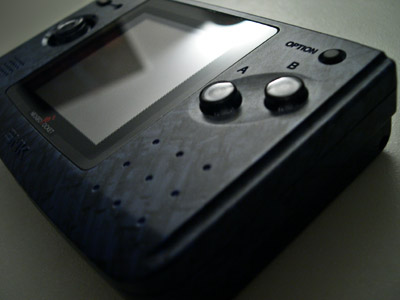
There are a few other NGPC games that are on par with those I’ve looked at over the last six days. Neo Turf Masters is a nice arcade golf game in the tradition of Links and PGA Tour. Picture Puzzle (a Picross game), Puyo Pop, Puzzle Bobble and Pac-Man are all faithful implementations.
It would be remiss to write about a cult Japanese games system without at least mentioning its more outré software offerings. The NGPC’s slim library included mini-game collections, dating sims and even a version of train driving sim Densha de Go!, though none of these was quite as strange as Ganbare Neo Poke-Kun.
And so, we come to the net verdict of our reappraisal of the machine by modern standards (the Cumulo-supercede-o-factor if you will). By any objective measure the machine is obsolete. Outmoded. Kaputt. All of its games can be filed away as being mildly historically interesting but of no immediate relevance to the modern gaming scene.
Except one.
Card Fighters Clash is still one of the very best handheld games ever made. In revisiting the game for this article I’ve become addicted again. If you’ve never had the pleasure, get onto eBay or your retro games stockist of choice and track it down, along with the machine. Or better still, get two and a link cable. The whole kit shouldn’t cost you much more than the price of a new game.
After a short while you’ll forget that you’re squinting at a screen that would shame a pocket calculator, and will become immersed in one of the purest, most satisfying experiences gaming has to offer. Perhaps some day soon SNK Playmore and Capcom will realise its potential and re-release it properly across multiple formats.
Nintendo might have had the last laugh when it came to commercial success in the handheld arena, but how many Game Boy, Game Boy Advance or even DS games will have kept their lustre after ten years? In this respect at least the NGPC lived up to its potential.

Tags: handheld, iphone, neo geo, neogeo, neogeo pocket color, ngpc, nintendo ds, psp, snk
This article is part of the NeoGeo Pocket Color: 10th Anniversary retrospective.
I wrote about this game before in 2003, but these are my updated (and hopefully final) views.
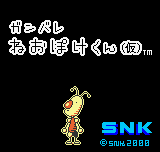

If you take a group of artists that has been denied meaningful creative freedom for years, and give them carte blanche to make what they want, the result is typically going to be a glorious, undisciplined shambles. (Ever seen The Monkees’ film?) Thusly, when SNK’s developers were allowed to make something for the NGPC that wasn’t yet another fighting game, they delivered what has to be the most peculiar game on the system.
Ignoring Pokémon for once, Ganbare Neo Poke-Kun takes its inspiration from that other great portable gaming craze – Tamagotchi. It presents a window into the life of Neo Poke-Kun, a hapless, big-headed homunculus who lives in a dingy bedsit inside the NGPC’s circuits, and follows a routine based on the system clock.
Poke-Kun differs from a typical virtual pet in that rather than having to feed and water him, the player is given responsibility for his emotional wellbeing. This is quite a tall order, as the methods of interaction available are intentionally extremely limited, indirect and unpredictable.
(more…)
Tags: game title, ganbare neo-poke kun, handheld, neogeo pocket color, ngpc, snk, virtual pet, wtf
This article is part of the NeoGeo Pocket Color: 10th Anniversary retrospective.
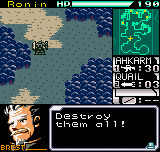
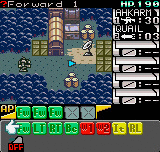
One of the few games released for the NGPC that didn’t piggyback on an established gaming brand, Faselei! is a turn-based tactical game about giant robots. It appeared in the UK right at the end of the machine’s life, with a limited quantity reaching the shelves before SNK made like Arnie and did a Total Recall. Complete copies of the game (with the box and manual) are rare – you’ll more often find the cartridge being sold on its own, sourced from SNK’s liquidated stock.
While at first glance Faselei! appears to be heavily influenced by (Square’s venerable mecha tactics series) Front Mission, it adds some innovations of its own to the formula. The most significant of these is the way that the game flow is structured. Each turn, you program in a sequence of commands (moving, turning, firing, reloading, defending, and so on) and hit ‘execute’, and then watch as all the units on the map play out their turns simultaneously. It’s reminiscent of programming the LOGO turtle at school, except with more explosions.
(more…)
Tags: faselei!, game title, handheld, mecha, neogeo pocket color, ngpc, sacnoth, snk, turn-based strategy
This article is part of the NeoGeo Pocket Color: 10th Anniversary retrospective.
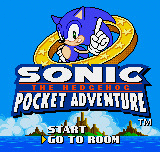
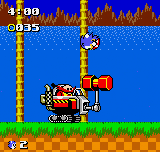
While most of the games for the NGPC were developed by SNK (or their partners), there was a small but consistently high quality third party presence. SNK presumably offered favourable terms to encourage Capcom, Namco, Sega and Taito to speculate on the system. Titles including Puzzle Bobble Mini, Pac-Man and Sonic Pocket Adventure added some much-needed variety and brand power to the NGPC’s library.
Sonic Pocket Adventure is a loose port of Sonic 2, with a smattering of elements from the other Mega Drive Sonic games. The graphics are a bit less colourful (falling somewhere between Master System/Game Gear and Mega Drive standards) but Sonic’s trademark speed and responsiveness are intact. The classic Sonic 2 bonus stage (an into-the-screen slalom run) is also replicated here.
(more…)
Tags: game title, handheld, neogeo pocket color, ngpc, sega, snk, sonic, sonic pocket adventure
This article is part of the NeoGeo Pocket Color: 10th Anniversary retrospective.


Ruddy mine carts.
I’m tempted to leave the review at that, but I suppose I should explain.
SNK made two Metal Slug spin-offs for the NGPC (the 1st and 2nd Missions). These feature micro-miniaturised versions of all the recognisable elements from the arcade series: accident-prone ‘Allo ‘Allo Nazi enemies, devastating guns, screen-filling bosses, beardy power-up granting POWs, mangled speech samples and of course an assortment of driveable vehicles.
In spite of all the obvious care that’s gone into shrinking everything down, it doesn’t disguise the fact that the NGPC hardware just isn’t up to the job. The main selling point of the Metal Slug games (particularly the early ones) was the spectacle. Stripped of the elaborate backdrops, lavish explosions, waves of enemies, collapsing scenery and superfluous animations, what you’re left with isn’t really Metal Slug any more.
(more…)
Tags: game title, handheld, metal slug, metal slug 2nd mission, neogeo pocket color, ngpc, snk
This article is part of the NeoGeo Pocket Color: 10th Anniversary retrospective.
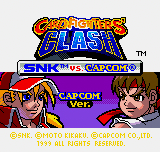

To eke out some more mileage from the Capcom license, SNK devised Card Fighters Clash, a virtual CCG based around collecting, trading and battling with charmingly-illustrated cards based on characters from SNK and Capcom’s back catalogues. They were probably as surprised as anyone when it turned out to be the best game on the system.
Positioned as the NGPC’s answer to Pokémon, it was released in two versions (Capcom and SNK, natch), each of which was weighted to make their respective company’s cards appear more frequently, but was in all other respects identical.
The single player game involves a lightweight RPG framework allowing the player to gradually gain access to rarer and more powerful cards and tougher AI opponents. This is set (somewhat prosaically) in ‘real world’ amusement centres around Japan. Capcom and SNK games are constantly referenced (as fiction), and there are even cameo appearances by some of their staff. (At one point you pay a visit to Shinji Mikami, who naturally lives in the Resident Evil mansion along with some card-battling zombies.)
(more…)
Tags: capcom, card fighters clash, ccg, game title, handheld, neogeo pocket color, ngpc, snk
This article is part of the NeoGeo Pocket Color: 10th Anniversary retrospective.
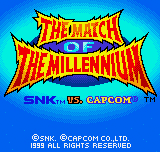
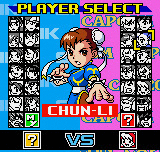
With SNK’s pedigree, you’d expect that the NGPC’s library would bountifully stocked with fighting games, and it doesn’t disappoint. SNK released no fewer than eight portable fighting titles, covering all of their main franchises at the time (King of Fighters, Fatal Fury, Samurai Shodown, The Last Blade), but the jewel in the crown was SNK vs. Capcom: The Match of The Millennium.
It’s clear from the outset that SvC:MOTM was intended to be the flagship title for the machine. It boasts a roster of 26 characters (plucked from the titles mentioned previously for the SNK side, and from the Street Fighter II, Alpha and Darkstalkers series for Capcom) each with a move set close to their arcade counterparts.
SNK avoided the mistake of trying to scale down their existing artwork to fit the NGPC’s screen. Instead, cute “super-deformed” character sprites are used, drawn at the system’s native resolution. This (presumably very labour-intensive) solution had the upside of providing space for thousands of animation frames, which are put to good use with lots of elaborate round introductions, taunts and special moves.
(more…)
Tags: capcom, fighting, game title, handheld, neogeo pocket color, ngpc, snk

The NeoGeo Pocket Color was launched in the West ten years ago this month. Each day this week, starting from tomorrow, I’ll be looking at a key game for the system and discussing its merits in terms of whether it’s still worth playing today. Before all that, let’s take a look at the machine itself and its history.
Tags: handheld, iphone, neo geo, neogeo, neogeo pocket color, ngpc, nintendo ds, psp, snk
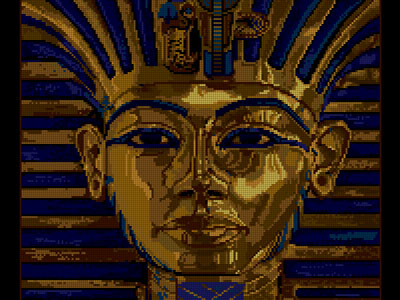
It must be hard for the younger generation to imagine what gaming was like in the 20th century. A case in point: up until the early 1990s, one of the main motivators for playing (or completing) new games was seeing new graphics. The amount of computer imagery being generated anywhere in the world at the time was very small, and floppy disks and ROM cartridges provided precious little space for purely decorative images (which were usually painstakingly hand-drawn). I distinctly remember the promise of perhaps a single, quarter-screen still image seeming like a fair reward for the hours of effort it took to complete most Sega Master System games.
It became a commercial imperative for developers to make sure that the limited amount of artwork in their games was as attractive as possible. Studios like The Bitmap Brothers and Psygnosis became famous for their visual style as much as for the content of their games. As a result there was great demand for a paint package that would allow artists to produce work quickly, efficiently and with the minimum of programming knowledge or intermediate steps. Probably the most successful and widely used package was Electronic Arts’s Deluxe Paint.
Tags: amiga, deluxe paint, deluxepaint animation, ea, graphics, PC, tools
Over the last few years the absence of a comprehensive reference site for games comparable to the Internet Movie Database has become increasingly frustrating. For a long time the nearest thing we had was MobyGames, but that was lacking in many ways – huge gaps in their database, and a weird inconsistent patchwork of data within entries, with endless duplication, bizarre fields such as “Perspective”, “Genre” and “Non-Sport”, and a fundamentally broken automated credits system (which probably seemed clever in 1999).
Later, Wikipedia (and a plethora of gaming-themed wikis) came along, but the nature of wikis has meant that the formatting and quality of entries has always been wildly inconsistent. General-purpose wikis just can’t be easily searched and filtered as data. Elsewhere, small groups of enthusiasts have been working on databases such as Hall of Light and World of Spectrum, which exhaustively catalogue the software available for a single hardware platform only.
More industrious people than I had also noticed that this problem was still unsolved, among them Vince Broady and Jeff Gerstmann (both formerly of GameSpot), who in 2008 launched Giant Bomb. Billed as “the world’s largest editable video game database”, Giant Bomb has two immediate advantages over MobyGames and everything else that has come before: firstly, it’s running on a sane, modern software platform (based on Django), and secondly the administrators have put a huge amount of thought into the structure and extensibility of the database, ensuring that entries can be tagged and connected to other entries in meaningful ways with the minimum of duplication and clutter. For instance, for any game it’s possible to see a breakdown of all the published SKUs, or to easily find games which use the same rendering engine or feature the same characters, or any other useful criteria the contributors include.
Tags: commentary, giant bomb, mobile games, pocket gamer, rant, wikipedia
